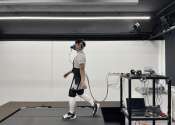New adaptive artificial muscles made of a single-helical woolen yarn
In recent years, material scientists have designed a wide range of innovative materials that could be used to create new technologies, including soft robots, controllers and smart textiles. These materials include artificial ...









